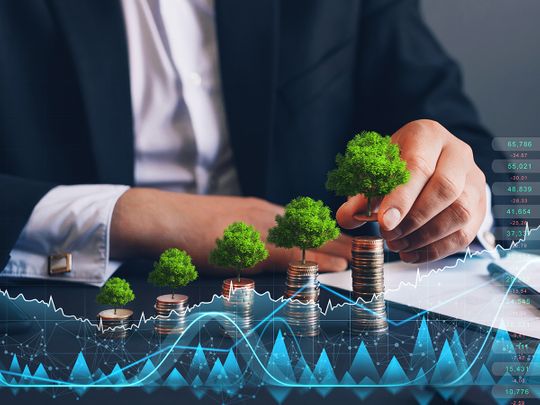
US borrowers are retreating en masse from the world's second-biggest ESG debt class.
The $1.5 trillion market for sustainability-linked loans, in which borrowing is tied to environmental, social or governance goals, has seen an overall slowdown in volumes this year as both interest rates and greenwashing fears rise.
But nowhere has the decline been as precipitous as in the US, where the number of new sustainability-linked loans is down 80 per cent from a year earlier, according to data compiled by Bloomberg.
Unique politics, reputational risk
That slump reflects the uniquely tense political environment that borrowers in the US have to navigate, according to Jacomijn Vels, the global head of sustainable finance at ING Groep NV, the first bank to arrange a sustainability-linked loan back in 2017.
In the US, not only does a borrower have to manage the reputational risk that always comes with an ESG product, but "you also have to manage your reputation toward the anti-ESG movement," Vels said. "That is bringing an extra dimension to acting in the Americas, especially in SLLs."
Since ING arranged the first SLL more than half a decade ago, sustainability-linked loans have mushroomed into the world's largest ESG debt market after green bonds.
Between 2018 and 2021, BloombergNEF estimates that SLL borrowing soared more than 960 per cent to $516 billion of annual deals. And SLLs arranged in the US made up 36 per cent of the global total just two years ago, data compiled by Bloomberg show.
But as the anti-ESG movement spreads across more US states, American borrowers are turning their backs on loans that require them to tie their credit to the achievement of ESG goals.
Next year, an estimated $187 billion of SLLs are coming due globally, with about 90 per cent of those in the form of revolving credit facilities, according to data compiled by Bloomberg. There are already signs that bankers may treat those loans with caution, as regulators start to pay more attention to a market that's so far avoided their scrutiny.
Growth markets on the rise
As US sales slow, ING sees the Asia-Pacific region as a growth market. It recently hired bankers in South Korea and Australia to help tap into that expansion. Last month, the bank closed an SLL worth just over $400 million in Indonesia.
"We have seen first deals in various countries in APAC of products that we have already engaged on in Europe," Vels said. "The market is less mature, but we really see that stepping up."
Rapid growth in Asia means SLL volumes in the region are now on track to exceed those in the US for the first time, according to Bloomberg data. So far this year, APAC has seen roughly $32 billion of SLL sales, compared with $28 billion in the Americas.
Vels said ING prefers to only arrange SLLs in which the borrower commits to at least three ESG targets. But it's proving "harder and harder" to get other banks to agree to that standard, she said.
Of the sustainability-linked loans for which there's publicly available data, only about a quarter are tied to three or more ESG targets, according to data compiled by Bloomberg.
Having an SLL with only two ESG targets "can still be meaningful, material and ambitious," Vels said. "But then the scrutiny" of those two targets "needs to be at a very high standard," she said.
Vels said a key challenge now facing SLL borrowers is how well they tackle the broadest measure of their greenhouse gas emissions, known as Scope 3. Most of her clients accept the importance of the metric, but are wary of committing themselves to a target, she said.
Anxiety is biggest "on the downstream side, which concerns their clients and looking at the life-cycle of your product," Vels said. "That's generally a tougher conversation than to look at your supplier and influence how you source your materials and your own goods."








